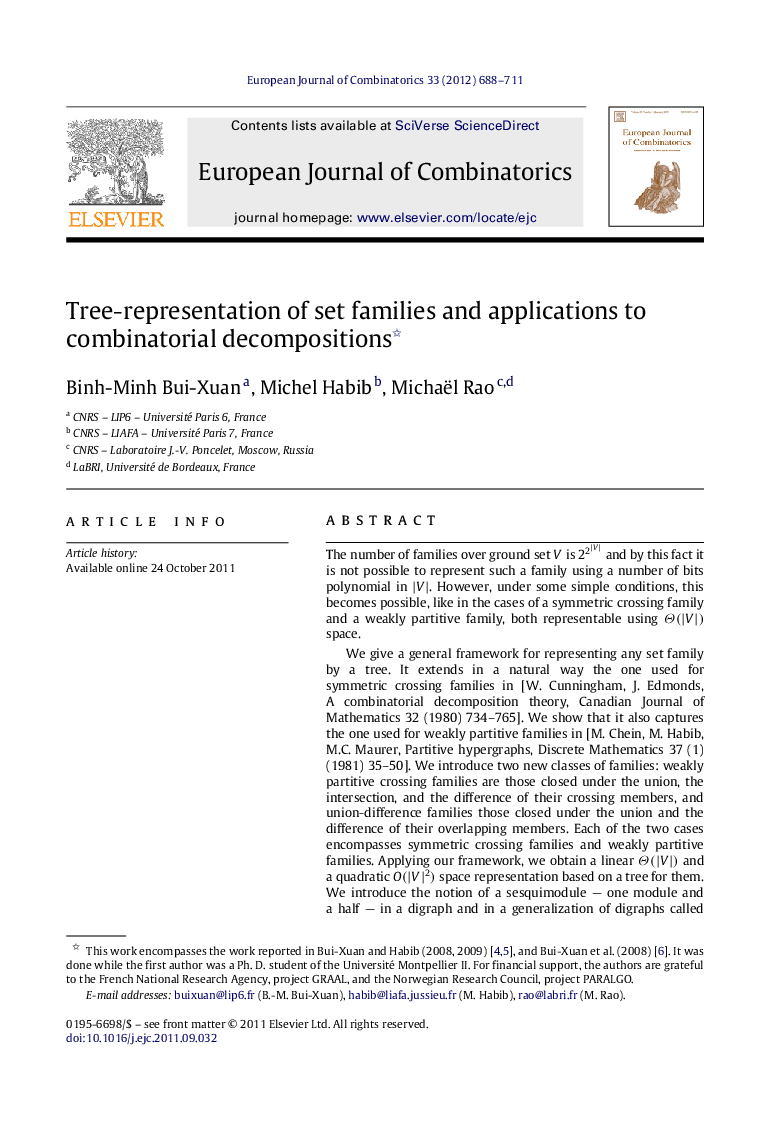| Article ID | Journal | Published Year | Pages | File Type |
|---|---|---|---|---|
| 4653879 | European Journal of Combinatorics | 2012 | 24 Pages |
The number of families over ground set VV is 22|V|22|V| and by this fact it is not possible to represent such a family using a number of bits polynomial in |V||V|. However, under some simple conditions, this becomes possible, like in the cases of a symmetric crossing family and a weakly partitive family, both representable using Θ(|V|)Θ(|V|) space.We give a general framework for representing any set family by a tree. It extends in a natural way the one used for symmetric crossing families in [W. Cunningham, J. Edmonds, A combinatorial decomposition theory, Canadian Journal of Mathematics 32 (1980) 734–765]. We show that it also captures the one used for weakly partitive families in [M. Chein, M. Habib, M.C. Maurer, Partitive hypergraphs, Discrete Mathematics 37 (1) (1981) 35–50]. We introduce two new classes of families: weakly partitive crossing families are those closed under the union, the intersection, and the difference of their crossing members, and union-difference families those closed under the union and the difference of their overlapping members. Each of the two cases encompasses symmetric crossing families and weakly partitive families. Applying our framework, we obtain a linear Θ(|V|)Θ(|V|) and a quadratic O(|V|2)O(|V|2) space representation based on a tree for them. We introduce the notion of a sesquimodule — one module and a half — in a digraph and in a generalization of digraphs called 2-structure. From our results on set families, we show for any digraph, resp. 2-structure, a unique decomposition tree using its sesquimodules. These decompositions generalize strictly the clan decomposition of a digraph and that of a 2-structure. We give polynomial time algorithms computing the decomposition tree for both cases of sesquimodular decomposition.
